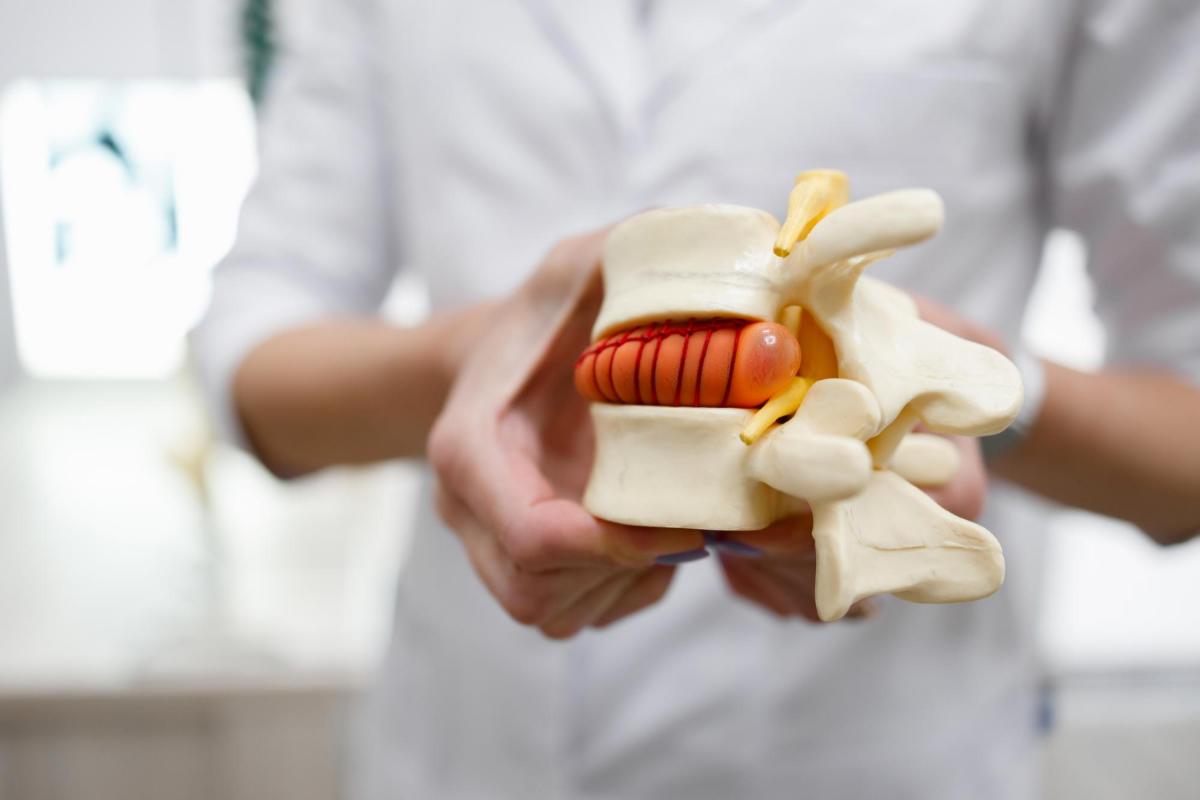
Discs cushion the vertebrae that form the spine in your back. These discs are rounded, like little pillows, with a tough exterior layer (annulus) surrounding the nucleus. Discovered between each vertebra in your spinal column, discs are like shock absorbers for your spinal bones.
A herniated disc also dubbed bulged, slipped, or ruptured, is a portion of the disc nucleus pushed out of the annulus into your spinal canal through a tear or rupture. According to our orthopedic surgeon in Deland, discs that become herniated are usually in an early stage of degeneration. As a result, your spinal canal has confined space, which is inadequate for your spinal nerve, and a displaced herniated disc fragment. Due to this displacement, your disc presses on spinal nerves, usually causing pain, which may be excruciating.
Herniated discs can happen in any portion of your spine. They are more standard in your lower back (lumbar spine) but also in your neck (cervical spine). The location where the pain is encountered depends on what portion of the spine is involved.
Causes
A single extreme strain or injury may provoke a herniated disc. However, disc material deteriorates naturally as we age, and the ligaments that keep it in place start to fatigue. As this deterioration advances, a relatively insignificant strain or twisting motion can force a disc to rupture.
Specific individuals may be more powerless to disc issues and, consequently, suffer herniated discs in various locations along your spine. In addition, research has shown that an inclination for herniated discs may exist in lineages with several individuals impacted.
Symptoms
Symptoms vary considerably, leaning on the position of your herniated disc and the extent of the herniation. If your herniated disc is not pushing on a nerve, you may have a low backache or lack of pain. If it presses on a nerve, there might be pain, numbness, or weakness in the region of your body to which a nerve travels. Generally, a herniated disc is preceded by an attack of low back pain or a long narrative of intermittent bouts of low back pain.
Lumbar spine (lower back): Sciatica or Radiculopathy often results from a herniated disc in your lower back. Pressure on one or more nerves that contribute to your sciatic nerve can induce pain, tingling, burning, and numbness that radiates from your buttock into your leg and sometimes into your foot. Usually, one side (left or right) is involved. This pain frequently is expressed as intense and electric shock-like. It might be more intense with standing, walking, or sitting. Straightening your leg on the involved side can frequently make your pain worse. Along with leg pain, you may encounter lower back pain; but, for acute sciatica, the pain in your leg is often more harmful than the pain in your lower back.
Cervical spine (neck): Cervical radiculopathy is the signs of nerve compression in your neck, which might include muted or sharp discomfort in your neck or between your shoulder blades, pain radiating down your arm to your hand and fingers or numbness or tingling in your shoulder or arm. The pain may grow with certain positions or motions of your neck.
We hope this helps you better understand herniated discs. Contact us today if you need an orthopedic surgeon in Deland. We are here to help!